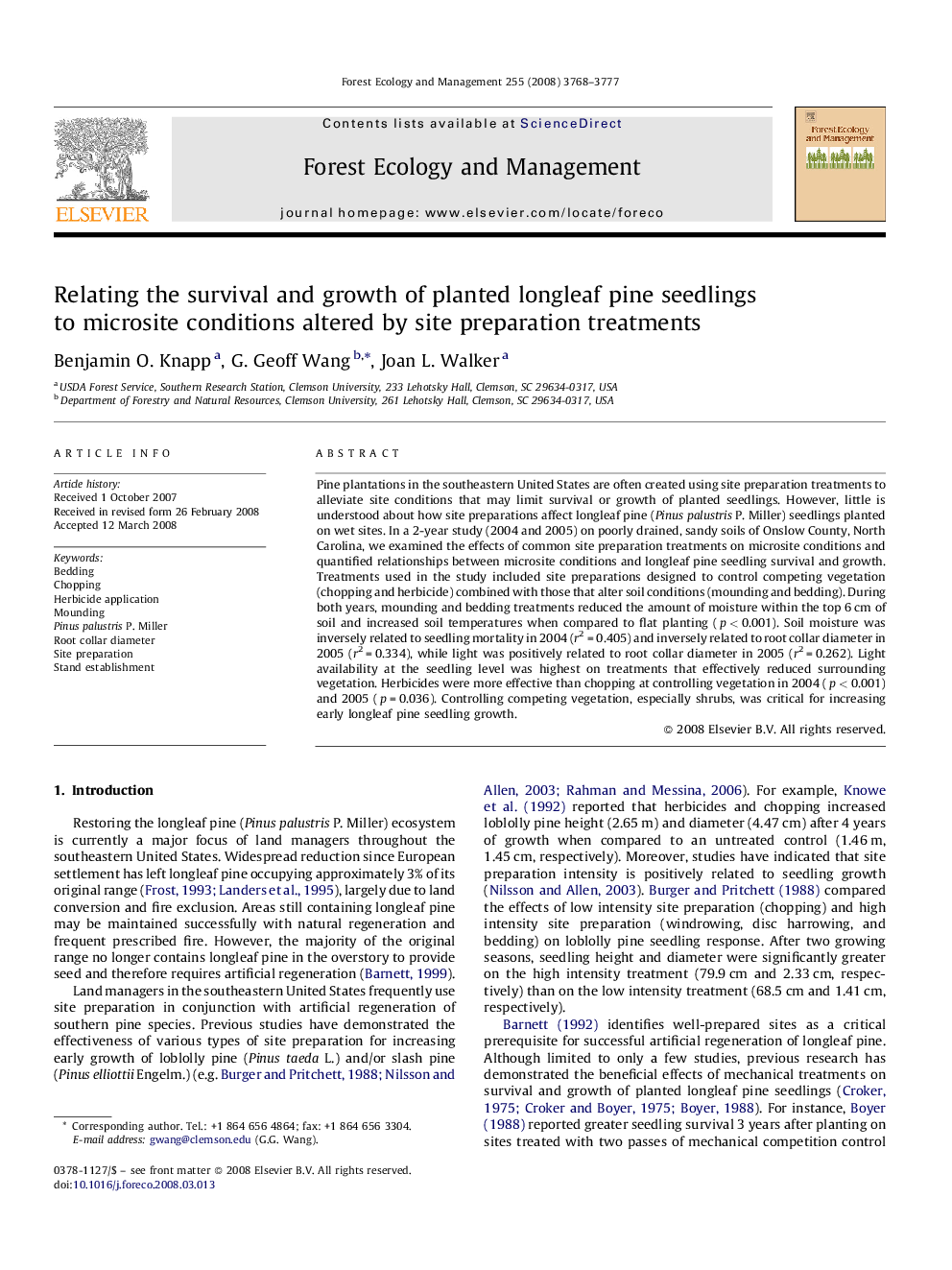| Article ID | Journal | Published Year | Pages | File Type |
|---|---|---|---|---|
| 89322 | Forest Ecology and Management | 2008 | 10 Pages |
Pine plantations in the southeastern United States are often created using site preparation treatments to alleviate site conditions that may limit survival or growth of planted seedlings. However, little is understood about how site preparations affect longleaf pine (Pinus palustris P. Miller) seedlings planted on wet sites. In a 2-year study (2004 and 2005) on poorly drained, sandy soils of Onslow County, North Carolina, we examined the effects of common site preparation treatments on microsite conditions and quantified relationships between microsite conditions and longleaf pine seedling survival and growth. Treatments used in the study included site preparations designed to control competing vegetation (chopping and herbicide) combined with those that alter soil conditions (mounding and bedding). During both years, mounding and bedding treatments reduced the amount of moisture within the top 6 cm of soil and increased soil temperatures when compared to flat planting (p < 0.001). Soil moisture was inversely related to seedling mortality in 2004 (r2 = 0.405) and inversely related to root collar diameter in 2005 (r2 = 0.334), while light was positively related to root collar diameter in 2005 (r2 = 0.262). Light availability at the seedling level was highest on treatments that effectively reduced surrounding vegetation. Herbicides were more effective than chopping at controlling vegetation in 2004 (p < 0.001) and 2005 (p = 0.036). Controlling competing vegetation, especially shrubs, was critical for increasing early longleaf pine seedling growth.
